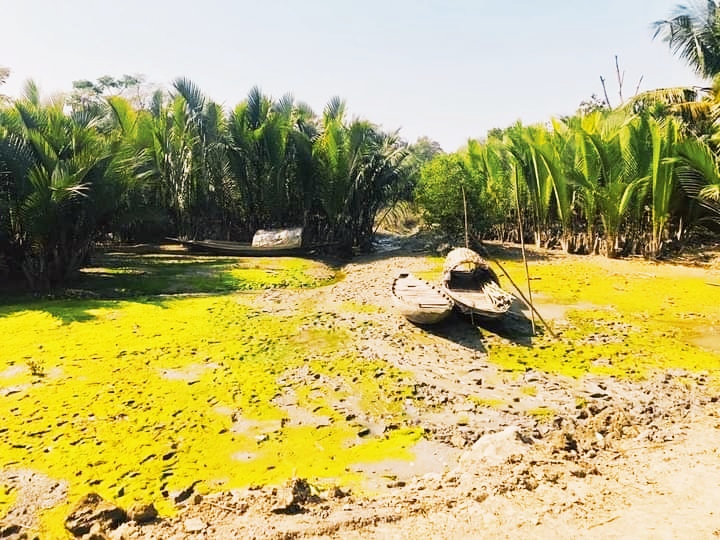Selection and preservation of good improved seeds
Seeds are a basic agricultural material. Plants propagate through seeds. According to botany, a mature fertilized ovule is called a seed. We know that it is possible to propagate by using other parts of the plant. In agriculture, they are also recognized as seeds. These are called agronomic seeds by agronomists and fertilized mature eggs are called True Seed or Sexual Seed. The quality of plant varieties is passed on to the next generation through seeds. The quality of the mother plant, that is, the organ used in organ reproduction, may be passed on to the next generation. On the other hand in sex seed a logical mixture of the qualities of both mother and father plant occurs according to the rules. The problem with this is that if not self-fertilized, all the qualities of the mother plant may not be found in the next generation.

However, this method can be used to create a third variety by hybridizing between two different varieties (same crop) so that some of the mother’s and some of the father’s good qualities can be combined. In this way genetic development of seeds is possible, which is called hybridization. Farmers want to benefit by using improved seeds of high yielding varieties with improved quality for cultivation. Agricultural research institutes work on seed development, the Seed Certification Authority gives final approval to improved seeds and state agricultural development corporations like BADC provide improved seeds to farmers through various recognized representatives. Seed improvement or variety improvement can also be done through continuous selection process on the basis of certain desired qualities from generation to generation of an existing crop variety.
There are a few more things to consider before selecting improved seeds
This method of development is called Selection Breeding. Observation and selection is the main strategy here. Even after hybridization, several generations are observed and selected. There are a few more things to consider before selecting improved seeds at the farmer level e.g.
- Which varieties of crops are suitable for the agro-ecological zone of the farmer.
- Which of the varieties yields in the shortest time.
- Which of the varieties can give the highest yield at the lowest cost.
- Diseases of any species – Pest resistance is relatively high.
- Field care of any variety is easier.
Seed germination and seedling freshness can be determined
Although high yielding is a special quality of improved varieties. But high yields are not guaranteed only with improved varieties of seeds, farmers need better seeds of improved varieties. Good seeds need to have some more good qualities such as unadulterated seeds with at least 60% germination capacity. Despite the deficiency of these qualities, any seed fails to give high yield. So improved good seed selection is an important condition for getting high yield.
The blotter test involves spreading the blotting paper in a petridis, placing the seeds with water and keeping them in a suitable environment to test the germination of the seeds. In the same way germination is done by spreading a few layers of newspaper in a tray and soaking the seeds with water. After a few days, the growth of the seedlings can be examined to determine the vigor of the seeds or the freshness of the seedlings. Germination capacity and freshness of seedlings can be determined by percentage.
Proper storage of seeds
Good seeds can also go bad due to lack of proper preservation. In reality, conservation is more relevant than real seeds. Properly covered, it will withstand a great deal of adverse conditions. Advanced Seed Preservation Techniques: Seed crop selection has to start from the field. All possible measures should be taken while the seed crop is in the field so that the seed crop is not infected and any other pests are not affected. These seeds should be collected as soon as they mature, sifted, sorted and dried with care so as not to injure. Can be sun-dried in the open air. Seed drying may have different values for each crop. That is, the seeds have a certain safe level of moisture. For rice, wheat seeds this moisture level is 8-10%, too dry the seeds can become brittle and damage the seed embryos.
Improved seed storage techniques and risk of seed spoilage
On the other hand, if the seeds are dried below safe moisture levels, bacterial infections and insect infestations can easily occur. Humidity has a controlling effect on how much and how long the stored seeds will stay good. In addition to seed moisture, the internal humidity of the container in which the seeds will be kept and the internal humidity of the container in which the seed-filled containers will be kept can also be affected. However, if the seed container is such that air cannot enter or exit, then there is no risk of spoilage of good seeds. Apart from moisture, all the influencers that can damage the seeds are high heat, intense rays etc.
However, if appropriate amount of dried seeds are kept in airtight containers, their effect will not be much. However, seeds collected in containers should be stored in a dark cool place, protected from the infestation of rats, insects, etc. Seedlings can be kept in cold store. In that case, there should be a separate area inside the cold store. If the amount of stored seeds is less (such as vegetables – flower seeds) the seeds can be stored in the refrigerator at a temperature of 5 degrees Celsius by writing the identity on the packet or container. Before storing the seeds for storage, it is necessary to know whether there will be a new crop from those seeds or not.




